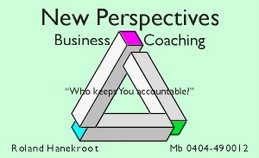Or the business lessons I learnt in an Italian "Piscina”
One of the many exciting experiences I had while in Italy was going for a swim in a local swimming pool. I had taken up swimming as a serious strategy on the way to everlasting life a few years previous and was keen to continue the regime while waiting for the universe to send Her messages.
Most of us have some knowledge of Italian traffic; we take great delight to relate crazy traffic stories on our return from Rome or Naples. Italian traffic does indeed seem to operate along different rules than traffic in Australia, but the truly crazy traffic of Italy is to be found elsewhere, namely in the local swimming pools on any afternoon of the week. My first introduction to the council swimming pool in Florence was a heart stopping experience.
Bloodbath
There must have been 500 people in the pool, swimming in 500 different directions and all trying to find clear water. My pursuit of life everlasting took a backseat to my pursuit of life right then. I crawled out of the pool 10 minutes later with a bleeding nose, bruises and scratches all over my body, as if I had been in a pub fight.
"How to make the Competition irrelevant"
The other buggers
The authors of Blue Ocean Strategy make a similar point about business and competition. Most of us business owners look at our competition and ask: How can we stand out from the crowd, how can we be better, quicker, cheaper than the other buggers? In other words, we go to battle with our competition for the same dollar, the same customer. But what might we see if we step outside that battle for a minute? What might we see about the market and our business in it? What other opportunities are there? And how can we access those opportunities? What can we do to find clear water in the pool, so we can focus on doing what we do best instead of spending all that energy trying to beat the competition?
It is tempting to engage with the battle right in front of us and become absorbed by it. But is it really the best place to direct our energy? Maybe we can find a different field to play in all by ourselves?
My own example
Let me give you a business example from my own experience. I normally refer to myself as a “Business Coach”. There is no accepted definition of what business coaching actually is, but there is a successful franchise company that also describes its services as “Business Coaching”. Because I also refer to myself as a business coach, I am by default in competition with this company and swim in the same pool with them even though my approach and services are very different from theirs.
At some point I realised the stupidity of this strategy. To do so I would have to change my personal values, my philosophy and my approach to my clients. That is not a tenable proposition obviously, and it became clear to me that what I had to do instead, was to find my own swimming pool. Being able to settle into my favorite stroke without concerning myself what stroke everybody else was swimming and if I was about to be run over. It took me some time, but I have found that pool and I am so much happier for it.
So this is your mission, should you choose to accept it: Go out and find your empty swimming pool, where you can swim powerfully on your own, being able to focus on your own stroke as opposed to everybody else’s.
1) Who are the potential customers of my services?
2) Which group(s) of potential customers don't buy (or virtually don’t) from my company or from my competitors?
3) What are all the factors that we and all our competitors already compete on with each other?
4) On which factors are none of us competing?
3 Case studies:
1) Financial planning for Gen Y:
A Financial Planning company I worked with some years ago went through a strategy planning process with me in which we asked questions like those above. The process turned up that all financial planners were trying to out-compete each other on the same factors and all aimed at the same clients.
The owner of the company saw a trend in society that indicated that young generation Y’ers were holding off buying their first bit of real estate and electing to continue to pay rent in the trendy inner city areas of Sydney. He suspected that when Gen Y’ers turn 35 they too start to think about having families and homes in the suburbs and that they would need a substantial nest egg to put down as a deposit. The other thing he noticed was that Gen Y’ers as a rule want nothing to do with financial planners, and vice versa.
He put these observations together and developed a really funky and smart offering aimed at helping Gen Y’ers prepare for the day that they do want to buy a home to raise their family in. Initially the fees they earned from these services were minimal but over time it has become a golden business, and essentially without competition. My client swims in his own pool and practices his own stroke.
2) Smart video productions:
Another client of mine produces video productions. To create his own swimming pool he has found a way to produce a professionally edited and cut 3 camera coverage of an event for the price of single camera operator. The difference this makes in quality is enormous. He is now swimming in a pool all by himself. For particular types of events (awards nights, school events, weddings etc) and a particular type of client, his competition is irrelevant.
3) Renovating Sydney’s terrace houses:
Finally I have another example from my own days as a builder in the crowded Sydney renovations market. We came to a realisation that 80% of Terrace houses fit in one of 5 design templates. At the same time most terrace house owners want to open up the back of the house to the light, bring the bathroom into the middle of the house and update the kitchen etc. Putting these two realisations together meant that we were able to offer a standardised design-and-construct service that nobody else was able to match. Very soon clients were knocking down the door and we stopped worrying about the competition.
Do your thing
If you would like to create your own swimming pool, your own golf course or your own private trout stream for your business, why don’t you come and have a chat with me. I can assure you there is nothing more fun and rewarding in business than swimming in your own pool.
The book I referred to is:
"Blue Ocean Strategy" by W. Chan Kim and Renee Mauborgne





